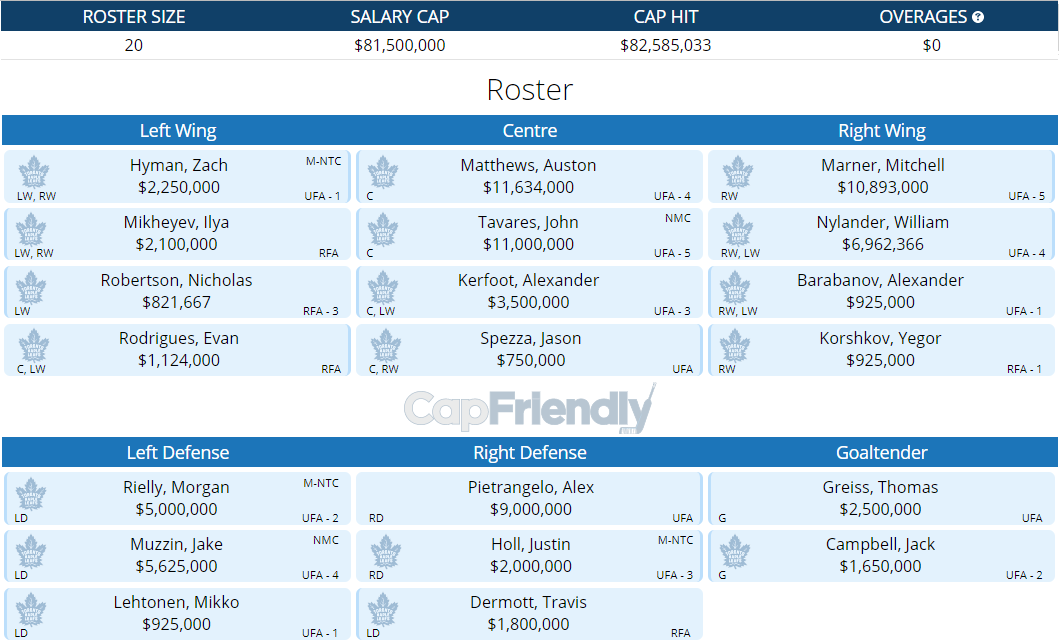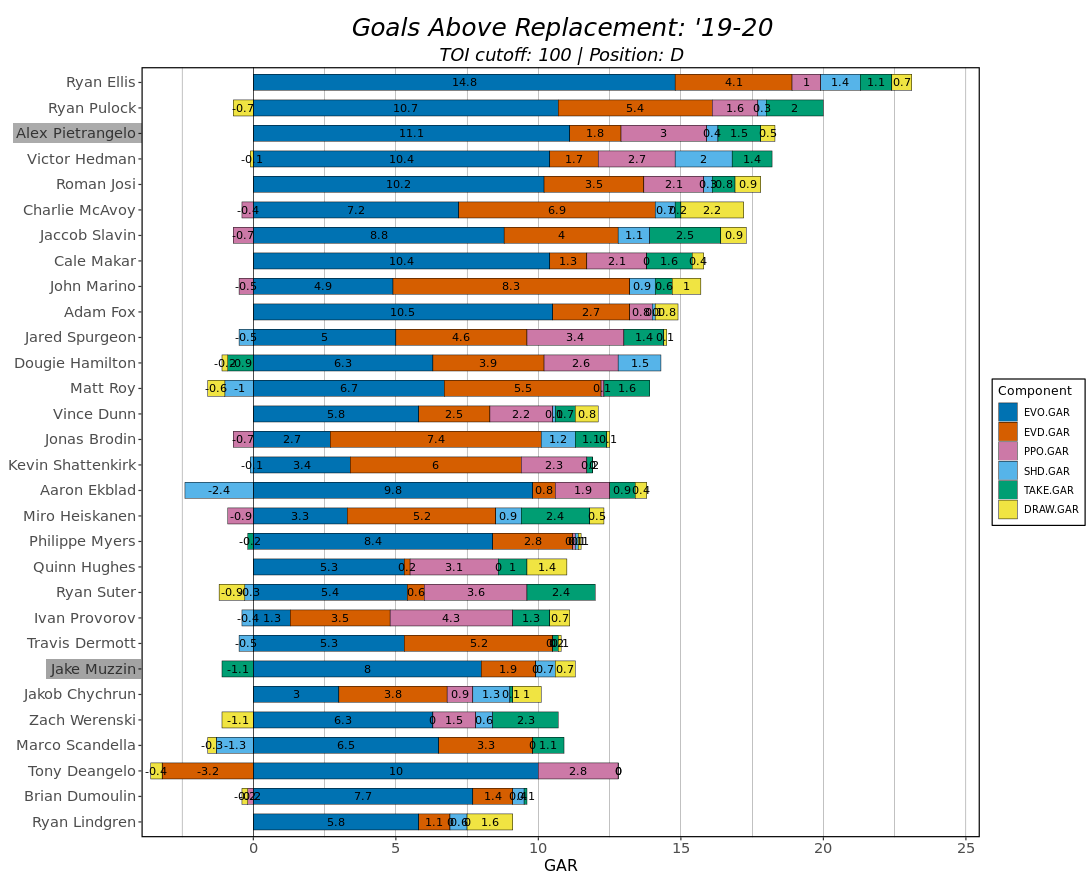Seems like déjà vu, doesn’t it?
Just two years ago, New York Islanders captain John Tavares made an unprecedented move, leaving the team that drafted him in favor of his hometown Toronto Maple Leafs. In a league where superstars hardly ever switch teams, especially via free agency, the news sent shockwaves through the hockey world for weeks – and for good reason.
Related: Maple Leafs Signing Pietrangelo Can Be Done, But It’s Difficult
Fast forward to the present and St. Louis Blues captain Alex Pietrangelo has decided to test free agency, potentially walking away from the only team he’s ever known just a season removed from hoisting the Stanley Cup. With all that’s gone on in 2020 we probably shouldn’t be surprised: up is down, left is right, and another Ontario boy may be coming home to Toronto.

But before we get carried away and declare that Pietrangelo’s really coming home, let’s take a step back. With the monstrous contract that the 30-year-old defenceman will command, is he really the missing piece that the Maple Leafs need?
Pietrangelo Signing Would Decimate the Maple Leafs’ Depth
Make no mistake, the Leafs are in a cap crunch and barring several big moves, will be for the foreseeable future. That’s the reality that general manager Kyle Dubas signed up for when he set aside over $40 million dollars – nearly half the team’s salary cap – to his top-four forwards.
They’ve got $6 million in cap space heading into next season with a handful of notable names to re-sign including Travis Dermott, Ilya Mikheyev, Jason Spezza, and possibly the newly acquired Evan Rodrigues. That’s already a tight fit, and now you want to add Pietrangelo and his rumored $9 million cap hit to the mix? Good luck!
Needless to say, if the Leafs were to make room for Pietrangelo it would take some serious rearranging of the roster. There are several ways to do it, but for the purpose of this exercise, I’ll ignore the more radical ideas like shipping out Morgan Rielly.
Without further ado, here’s my best attempt.

There’s a lot going on here so let me explain my decision-making process. I’ve traded away Andreas Johnsson, Pierre Engvall, and Frederik Andersen in return for picks, prospects, and cap space. You could argue that the Maple Leafs may be able to get a cheap, useful roster player back for someone like Johnsson but I didn’t want to reach too much. I’ve re-signed Spezza to a league minimum contract, extended Dermott and Mikheyev to cheapish two-year bridge deals, and coaxed Rodrigues into a hometown discount at almost half of his $2 million qualifying offer.
I attempted to keep these numbers realistic by referencing Evolving Hockey’s contract projections, which are usually quite accurate. I replaced Andersen with free-agent netminder Thomas Greiss for half the price, and then filled in the rest of the roster with cheap organizational depth like Nick Robertson, Alexander Barabanov, Yegor Korshkov, and Mikko Lehtonen.
Related: Maple Leafs Are Right to Explore Life After Andersen
Notable names that I refuse to trade away include William Nylander, who is close to untouchable for me given his valuable contract; Alexander Kerfoot, who the Leafs simply need to retain to have any semblance of a third line; and Dermott, who has arguably become the team’s most underrated blueliner.

So what’s the end result here? Well, the Leafs have slightly downgraded in goal, their bottom-six features three or four completely unproven commodities… And they’re still a million bucks over the cap. Now maybe you can massage those numbers a bit to shave off that extra million (maybe you squeeze Dermott, Mikheyev, and Rodrigues even harder on one-year deals), but the point remains: signing Pietrangelo would likely decimate Toronto’s already questionable forward depth.
I would argue that Kerfoot is the only thing holding the third line together, otherwise, you’d basically have two first lines and two fourth lines. If these playoffs have taught us anything it’s that having depth scoring and four strong lines are more important than ever. Are the Maple Leafs better off with Pietrangelo if it means their bottom-six gets even weaker? Hard to say, but it seems like you’d be setting yourself up to get shut down by a team like the Columbus Blue Jackets once again.
The Maple Leafs Already Have a Pietrangelo
That’s right, I said it. The Maple Leafs already have a Pietrangelo caliber defenceman, and his name is Jake Muzzin.
Alright, it may be a bit of a stretch, but the gap probably isn’t as large as you think. Pietrangelo is a perennial Norris candidate, a Stanley Cup champion, a gold medal winner with Team Canada, and by all accounts one of the best defencemen in the NHL. While he is a two-time Cup winner, Muzzin isn’t quite in that same echelon, at least according to public opinion. However, the numbers do tell an interesting story.

When I evaluate defencemen I like to look at their all-around impact even more so than forwards. The main job of a forward is generally to put the puck in the net, so the guys who score the most and rack up the most points are usually (though not always) the best. The job of a defenceman is a bit more complicated which makes them trickier to evaluate. Yes, they can contribute to offense and score their fair share of points, but that’s not their main role and points shouldn’t be our primary form of assessment. Our evaluation must go beyond the box score.
Related: Maple Leafs Need to Solve Two Problems: Exploring Radical Solutions
What I really look for in a good defenceman is the ability to limit shots and chances against while maximizing shots and chances for – in short, the ability to tilt the ice in his team’s favor. This is often done in subtle ways that don’t necessarily show up on the box score, whether it’s by breaking up a rush chance with a good defensive stick, or by making a slick breakout pass to a curling centreman.
Fortunately for us, these things do show up over a large enough sample size in the underlying numbers like Corsi and expected goals. Building from that, there are models such as Goals Above Replacement (GAR) that can take a player’s individual and on-ice results and spit them out as easily digestible numbers. This is where a player like Muzzin shines.

It should come as no surprise that the Blues’ captain ranked third among defencemen with 18.2 GAR last season, carried primarily by his elite offensive contributions at even strength. What may shock you, though, is that Muzzin finished 24th with 10.1 GAR, even after missing 17 games due to injury. If you prorate Muzzin’s numbers over 70 games, he would’ve finished at 13.5 GAR – just 4.7 behind Pietrangelo with most of the difference coming from power-play offense (3 GAR).
Of course, Muzzin doesn’t even play on the man advantage for Toronto, and they already have a quarterback in Rielly, so you can almost dismiss Pietrangelo’s power-play contributions in terms of their relevance to the Leafs. In essence, the two defencemen have incredibly similar impacts at even strength.
Would adding another Muzzin – or even a Muzzin-plus – help the Maple Leafs’ blue line? Absolutely. But at $9 million, Pietrangelo would be demanding bout $3.5 million more than Muzzin’s cap hit while also on a much longer-term deal. If the cost of the contract wasn’t enough to worry you, the length probably should.
Pietrangelo Contract Could Shorten the Maple Leafs’ Cup Window
As is the case with most marquee free agents, the King City, Ont., native is going to demand the maximum seven-year term on his upcoming contract, which will take him from age 31 to 38. Toronto faced a similar scenario two years ago when they signed a then 28-year-old Tavares to a seven-year pact, and fans are already questioning how long the Maple Leafs’ captain has until he shows signs of decline. Tack on a few more years to Pietrangelo, who will be 31 by the time the 2020-21 season rolls around, and you can see why there is at least some risk associated with the rumored contract.
Related: 5 Good Options for the Maple Leafs at 44th Overall
You don’t have to look very far to see why it’s not wise to commit big money to aging defencemen. Just in the last few years, we’ve seen stars like Drew Doughty, Erik Karlsson, PK Subban, and Brent Burns sign huge deals only to fall off a cliff within the first few seasons. I don’t think it’s exactly farfetched to believe that Pietrangelo could be the next name on that list.
Even if he maintains his elite level for the next two or three seasons, you could be left with a second-pairing defender making $9 million for the last three or four years. These are the risks you assume when you go big game hunting in free agency, and we’ve seen teams get punished time and time again.
On the other hand, some projections do look favourably upon Pietrangelo’s potential aging curve.
This particular projection from JFresh Hockey looks somewhat optimistic to me as it assumes the 6-foot-3 defenceman will maintain an elite level of play over the next five seasons, through his 35th birthday. There are certainly exceptions to the rule, like 35-year-old Shea Weber who is somehow still going strong, but I wouldn’t necessarily bank on Pietrangelo doing the same.
The Maple Leafs already accelerated their rebuild by giving Tavares $11 million which, along with their other “big three” contracts, created a clearly defined window of contention for (hopefully) at least five years. And while Pietrangelo may help the team’s Cup chances in the near future, the Leafs would be risking $20 million – nearly a quarter of the salary cap – on a 30-year-old Tavares and 31-year-old Pietrangelo for the next five and seven years, respectively.

If Toronto were to sign the marquee defenceman this October, they would essentially be going all-in on the next three years. After that, it’s anyone’s guess how good Tavares and Pietrangelo will be into their mid-30s. And if they were both to decline significantly, the team would be stuck with two anchor contracts. That’s all well and good if they can win a Cup in those first few years, but we know that’s far from a guarantee even for the absolute best teams in the league.
Ultimately, the Maple Leafs will have to determine if adding Pietrangelo pushes them into the upper echelon of Cup contenders and if his hefty price tag is worth the risk.
If everything goes according to plan, Pietrangelo leads you to a Stanley Cup within the next few years. But if things go awry, that contract could shut the Leafs’ Cup window for good.